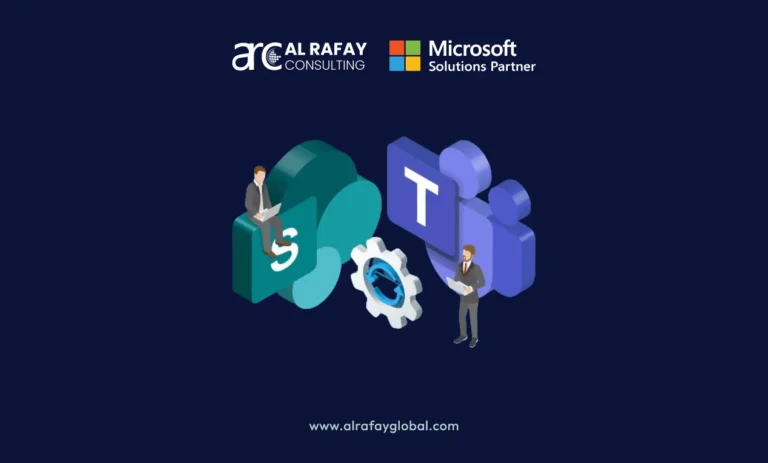In today’s data-driven landscape, businesses face the challenge of managing an overwhelming amount of information. According to recent studies, around 80% of enterprise data is unstructured, existing in formats like emails, documents, and social media content. Moreover, the amount of data created annually is expected to grow at a rate of 23% year-on-year. This exponential data growth, coupled with fragmented storage across various systems, often leads to inefficiencies, making it difficult for employees to find the information they need quickly.
Enterprise search software plays a crucial role in addressing this issue by providing a unified search experience across all organizational data. An effective search solution not only enhances productivity but also supports informed decision-making, improves customer experience, and streamlines operations. By centralizing access to relevant data, businesses can unlock insights, promote knowledge sharing, and foster a culture of informed decision-making.
But what is enterprise search software? What makes it different from other types of search tools, and how does it work? Well, in this blog we are going to answer all these questions. So, without wasting any more time, let’s start.
What Is Enterprise Search Software? – A Simple Definition
Enterprise Search Software is a sophisticated tool designed to enable businesses to quickly and efficiently retrieve information across various data sources within the organization. Unlike traditional web search engines, which focus on indexing and searching public websites, enterprise search software operates within an organization’s firewall, facilitating access to a vast array of internal data. This can include documents, emails, databases, intranets, content management systems, customer relationship management (CRM) systems, and other proprietary platforms.
The key distinction between enterprise search and traditional search engines lies in their data scope, security measures, and integration capabilities. Enterprise search software is tailored to provide secure access to relevant information while accommodating diverse data types and formats across multiple repositories within a corporate environment.
Understanding the Basics of Enterprise Search
How Enterprise Search Works
Enterprise search operates through three core processes: crawling, indexing, and retrieving information.
- Crawling: The software scans data sources to collect information, extracting key metadata, document content, and other relevant details. Crawlers work with structured and unstructured data across multiple repositories.
- Indexing: After crawling, the extracted data is processed and stored in an index. This index contains a mapping of keywords, document identifiers, metadata, and other relevant data attributes. Modern enterprise search solutions use sophisticated indexing techniques, including semantic indexing, to capture the meaning and context of information, rather than just keywords.
- Retrieving Information: When a user submits a query, the software searches the index to retrieve relevant results. This retrieval process employs search algorithms like keyword-based matching, semantic search, or natural language processing (NLP) to understand the user’s intent and provide the most pertinent information.
- Crawling: The software scans data sources to collect information, extracting key metadata, document content, and other relevant details. Crawlers work with structured and unstructured data across multiple repositories.
Key Features of Enterprise Search Software
Natural Language Processing (NLP)
NLP is a game-changer for enterprise search, as it allows the software to interpret user queries in a more natural, human-like manner. This capability helps users find relevant information even if they do not use precise keywords. For example, a search for “vacation policy” could return relevant HR documents on “paid time off” or “employee leave guidelines.”
Indexing and Crawling Capabilities
Effective enterprise search software must be capable of indexing vast amounts of data from different formats and sources, including unstructured data like emails or PDFs. Advanced crawling ensures that even the most deeply nested files are indexed and retrievable.
Advanced Filtering and Faceted Search
Faceted search allows users to narrow down search results based on predefined categories or filters, such as date, department, or document type. This feature significantly improves search precision, helping users find the exact information they need quickly.
Security and Access Control
Enterprise search must adhere to strict security standards, ensuring that users can only access information for which they have permission. Robust access controls are crucial in preventing data breaches and maintaining compliance with regulations like GDPR or HIPAA.
Integration with Various Data Sources
A versatile enterprise search solution integrates with multiple data repositories, including databases, intranets, cloud storage, and even third-party applications like CRM. This integration ensures that all enterprise data is searchable from a single interface.
Types of Enterprise Search Solutions
Enterprise search solutions come in two main deployment models: on-premises and cloud-based.
- On-premises solutions: These are installed and maintained on the company’s own servers. They offer higher control over data but require significant IT resources and infrastructure.
- Cloud-based solutions: These are hosted by third-party providers, offering flexibility and scalability without requiring heavy upfront investment in infrastructure. They are especially advantageous for organizations seeking rapid deployment and minimal maintenance.
- On-premises solutions: These are installed and maintained on the company’s own servers. They offer higher control over data but require significant IT resources and infrastructure.
Moreover, companies must choose between open-source and proprietary search solutions:
- Open-source platforms: Examples include Elasticsearch and Apache Solr. These provide flexibility and customization but may require a dedicated team for development and maintenance.
- Proprietary solutions: Examples include Sinequa and Microsoft SharePoint Search. These come with pre-built features, support, and a more user-friendly experience but at a higher cost.
- Open-source platforms: Examples include Elasticsearch and Apache Solr. These provide flexibility and customization but may require a dedicated team for development and maintenance.
Key Benefits of Enterprise Search Software
Enhanced Productivity
Enterprise search significantly reduces the time employees spend searching for information. According to a report by Mickensy & Company, employees spend nearly 20% of their workweek searching for internal information. With enterprise search, they can retrieve relevant data in seconds, resulting in significant productivity gains. Organizations using effective search tools can reduce search time by up to 35%, leading to faster project completions and more efficient workflows.
Improved Decision-Making
Access to timely, relevant information is crucial for decision-making. Enterprise search tools provide executives and team leaders with the data they need, enabling more informed decisions that can impact business strategy, product development, and customer satisfaction.
Increased Collaboration
Enterprise search fosters a collaborative environment by breaking down data silos and making information accessible to all departments. Team members can easily share knowledge and insights, which can lead to innovative solutions and cross-departmental collaboration.
Streamlined Customer Support
In customer support scenarios, having quick access to relevant customer data and previous interactions can drastically reduce response times and improve the customer experience. Enterprise search enables support teams to retrieve customer histories and product documentation in real-time, leading to faster and more effective resolutions.
Enhanced Data Security and Compliance
Data privacy and compliance are critical concerns in modern enterprises. By offering fine-tuned access controls, audit logs, and data encryption, enterprise search software helps organizations ensure that sensitive information is only accessible by authorized personnel. It also supports compliance with regulatory frameworks by tracking data access and usage.
Enterprise Search Software Use Cases
Knowledge Management
In knowledge-centric industries, having a unified platform to store and access knowledge is crucial. If not done properly it can significantly increase overhead costs. For instance, businesses can lose up to $47 million annually in lost productivity because of inefficient search systems. Enterprise search helps businesses centralize information, allowing employees to find policies, best practices, and research documents easily, ensuring knowledge is not lost in the abyss of emails or forgotten folders.
Customer Service Optimization
Support teams often deal with a myriad of customer queries and need fast access to troubleshooting guides, past interactions, and product information. Enterprise search streamlines this process, giving them a unified search platform to quickly retrieve all relevant data, leading to faster issue resolution and higher customer satisfaction.
Research and Development
Research teams often sift through volumes of data—from patents to technical papers. Enterprise search facilitates access to documents across all departments and historical data sources, enabling researchers to make connections between past and present findings, ultimately accelerating innovation.
Legal and Compliance
Legal departments deal with thousands of contracts, regulatory guidelines, and compliance documents. An enterprise search solution can streamline the tracking and retrieval of these documents, making it easier for legal teams to stay compliant and avoid costly mistakes due to misplaced or inaccessible data.
Human Resources
HR teams manage sensitive employee data, including records, policies, and training materials. With enterprise search, HR professionals can quickly retrieve employee information while ensuring that access to sensitive data is restricted to authorized personnel.
Lease Management In Real Estate
Another area in which enterprise search solutions are useful is the real estate industry. Often the property managers find it difficult to keep track of the lease data, teneat data, rents, and more. To solve this they can use lease tracking software based on enterprise search.
Challenges in Implementing Enterprise Search
Implementing enterprise search software can present several challenges. Addressing these issues effectively is crucial to the success of the search solution within an organization.
Data Silos and Fragmentation
Data silos occur when different departments or teams store information in separate systems that are not interconnected, making it difficult for a centralized search system to access all relevant data. Many enterprises have information spread across CRM systems, intranets, email servers, cloud storage, databases, and legacy systems. Data fragmentation further complicates this because data can exist in multiple formats (structured, semi-structured, and unstructured) and may use different metadata standards.
To overcome data silos, an enterprise search system must include robust integration capabilities and connectors to various data sources. Data normalization and transformation processes are essential to convert disparate data formats into a standardized indexable form. However, integrating these diverse sources can be time-consuming and requires careful planning to ensure data consistency and accuracy.
Scalability
With the explosion of data in modern businesses, enterprise search solutions need to handle vast amounts of information efficiently. The solution should scale with the organization’s growth, both in terms of data volume and user base. This requires not just storage and processing power but also efficient algorithms capable of handling complex queries in real-time.
Horizontal scaling, where the system distributes the load across multiple servers or nodes, is commonly used in cloud-based enterprise search solutions to maintain performance. Solutions like Elasticsearch implements distributed architecture to handle large-scale data processing and storage, but configuring such setups correctly requires technical expertise. Additionally, as the system scales, regular re-indexing and performance optimization become necessary to keep search responses fast and accurate.
Security and Access Management
Enterprise data often includes sensitive information that needs to be protected. Implementing a search solution without proper security controls can lead to data breaches or unauthorized access. Enterprise search software must support granular access control, allowing administrators to set user roles, permissions, and data access restrictions. This ensures that users only see information they are authorized to access.
Advanced search solutions integrate with existing security frameworks such as Active Directory (AD) or OAuth for user authentication and authorization. Encryption, both in transit and at rest, is critical to safeguard data. Another aspect of security is audit logging, which tracks user activity within the search tool to detect any suspicious behavior or compliance violations. Organizations must also consider data privacy laws, such as GDPR or CCPA, to ensure their search practices comply with legal requirements.
Cost and Resource Investment
The cost of implementing an enterprise search solution encompasses several components:
- Licensing Fees: Depending on whether an organization opts for proprietary or open-source software, licensing fees can vary significantly. Proprietary software typically requires subscription fees or one-time licenses, while open-source options like Elasticsearch offer free use but may involve additional costs for enterprise-level features.
- Infrastructure Costs: On-premises solutions require investment in servers, storage, and network equipment. Cloud-based solutions may involve ongoing costs related to usage, data storage, and scaling resources.
- Implementation and Maintenance: Customizing the search tool to integrate with various data sources, building connectors, setting up security protocols, and training staff require a significant upfront investment in time and resources. Maintenance costs include software updates, re-indexing, and performance tuning to keep the system functioning optimally.
- Licensing Fees: Depending on whether an organization opts for proprietary or open-source software, licensing fees can vary significantly. Proprietary software typically requires subscription fees or one-time licenses, while open-source options like Elasticsearch offer free use but may involve additional costs for enterprise-level features.
Cost-benefit analysis is crucial when selecting an enterprise search solution. The potential ROI, measured in productivity gains, time savings, and better decision-making, should justify these investments.
User Adoption and Training
The success of an enterprise search solution heavily depends on user adoption. Employees may resist new tools if they are complex or disrupt existing workflows. Therefore, providing comprehensive user training and support is essential to help employees understand the system’s capabilities and how to leverage them effectively.
Best practices for user adoption include creating user-friendly interfaces that resemble popular search engines, offering tutorials, and providing ongoing support. Collecting user feedback and iteratively improving the search experience can also drive adoption and improve overall satisfaction with the tool.
Key Considerations When Choosing an Enterprise Search Solution
When selecting an enterprise search solution, organizations must evaluate it against several criteria to ensure it meets their specific needs.
Integration Capabilities
The chosen search software should seamlessly integrate with the organization’s existing systems, such as:
- CRM (e.g., Salesforce)
- CMS (e.g., SharePoint, Confluence)
- ERP Systems (e.g., SAP)
- Intranets and File Repositories (e.g., Google Drive, OneDrive)
- CRM (e.g., Salesforce)
The integration capabilities dictate the extent to which the software can crawl and index data from diverse sources. A flexible solution should include out-of-the-box connectors and APIs to link with custom or legacy systems. Without adequate integration, the enterprise search may fail to provide comprehensive access to all relevant organizational data.
Customization and Flexibility
Every business has unique requirements, so customization is crucial. The search solution should offer flexibility in defining indexing rules, configuring search facets, setting up relevance ranking, and customizing the user interface. Advanced customization might involve tweaking search algorithms or implementing AI models to refine search results based on specific business contexts.
Customizable dashboards and analytics are also essential for monitoring search performance and user behavior. These insights can guide ongoing adjustments to optimize the search experience.
AI and Machine Learning Integration
Incorporating AI and machine learning enhances the search experience through intelligent features like:
- Semantic Search: Understanding user intent and the context of queries to provide more relevant results.
- Personalization: Adapting results based on user behavior and preferences.
- Predictive Analytics: Suggesting queries or content based on previous searches and usage patterns.
- Semantic Search: Understanding user intent and the context of queries to provide more relevant results.
Solutions like Sinequa and Coveo excel in AI-driven search, employing natural language processing (NLP) to understand complex queries. Implementing these capabilities requires some level of data preparation, including training AI models with domain-specific terminology and building ontologies to improve the software’s understanding of the organization’s data landscape.
User Experience
An intuitive user interface (UI) and easy-to-use search functionality significantly impact user adoption and satisfaction. Features like auto-suggestions, highlighted search terms, and faceted search help users refine queries and find information quickly. The UI should be customizable to fit the organization’s branding and user preferences. A mobile-friendly interface is also crucial, enabling access to search capabilities on various devices.
Data Security and Compliance
Robust security features, including encryption, user authentication, access controls, and audit logs, are fundamental. Additionally, the solution should support compliance with regulations such as GDPR, HIPAA, and CCPA by providing data masking, secure access protocols, and the ability to fulfill data subject access requests.
Best Practices for Implementing Enterprise Search
Proper implementation is key to maximizing the benefits of an enterprise search solution. Here are some best practices:
Conduct a Data Audit
Before implementing enterprise search, perform a comprehensive data audit to identify all potential data sources, data formats, and locations. The audit should assess:
- Data Quality: Identify duplicates, outdated information, and inconsistent formats.
- Data Sensitivity: Determine access controls based on the sensitivity of different datasets.
- Integration Feasibility: Assess the compatibility of data sources with the search software.
- Data Quality: Identify duplicates, outdated information, and inconsistent formats.
The audit informs the crawling and indexing strategy and ensures that all relevant information is accessible while complying with security requirements.
Define Search Goals and Metrics
Establish clear objectives for the search implementation, such as reducing time spent searching for information, improving customer support efficiency, or enhancing research capabilities. Define key performance indicators (KPIs) to measure success, including:
- Search Success Rate: The percentage of queries that return useful results.
- Average Search Time: The time taken to find the required information.
- User Adoption: The frequency and diversity of users accessing the search tool.
- Search Success Rate: The percentage of queries that return useful results.
Regularly review these metrics to identify areas for improvement.
Establish Access Controls
Define user roles and permissions to secure sensitive data. Implement a role-based access control (RBAC) system that dictates which data each user group can access. Access controls should integrate with existing authentication mechanisms, such as LDAP or Active Directory, to streamline user management and maintain security.
Prioritize User Training and Support
Training is crucial to ensure employees can effectively use the search tool. Develop training materials, host workshops, and provide ongoing support to help users understand advanced features like filtering, faceted search, and NLP query capabilities. Additionally, creating a feedback loop enables users to report issues and suggest improvements, facilitating continuous refinement of the search experience.
Regularly Update and Maintain the System
An enterprise search solution requires ongoing maintenance to stay effective:
- Re-indexing: Periodically re-index data sources to capture new information and ensure the accuracy of search results
. - Software Updates: Apply updates and patches to maintain security and performance.
- Performance Tuning: Monitor system performance and optimize settings to handle changing data volumes and usage patterns.
- Re-indexing: Periodically re-index data sources to capture new information and ensure the accuracy of search results
A proactive maintenance plan helps the search tool evolve alongside the organization’s needs.
Future Trends in Enterprise Search: A Detailed Exploration
Enterprise search technology is evolving rapidly, driven by advancements in artificial intelligence (AI), machine learning, and natural language processing (NLP). These technologies are transforming how businesses interact with their data and are poised to redefine the enterprise search landscape. Here, we will dive deeper into four key trends shaping the future of enterprise search: AI-powered and cognitive search, voice search integration, enhanced personalization, and deeper integration with enterprise systems.
AI-Powered Search and Cognitive Search
AI-powered search and cognitive search are already revolutionizing how enterprise search systems operate, but they are only scratching the surface of what’s possible. These technologies enable search engines to process data more intelligently, providing users with not only relevant results but also context-aware insights that traditional keyword-based search cannot offer.
1. From Keyword Search to Semantic Understanding
Most traditional enterprise search engines rely on keyword matching. While this works well for basic queries, it often falls short in understanding user intent or handling complex queries. AI-powered search systems, particularly those using NLP and machine learning (ML), are capable of understanding the meaning behind user queries, allowing for more nuanced search results. This shift from syntactic (keyword-based) to semantic (context-aware) search is significant because it allows search engines to interpret queries in the way a human would.
For instance, an employee searching for “latest sales report” in a semantic search system would not only get documents containing those keywords but also potentially access related presentations, emails, or even contextual information about sales performance from internal dashboards.
2. Machine Learning for Continuous Improvement
Machine learning models play a crucial role in improving search relevance over time. By analyzing user behavior, such as which results are clicked on, how often users refine their searches, or how long they engage with the retrieved documents, AI-driven search engines learn to rank future results more accurately. Reinforcement learning techniques allow the system to continuously improve by refining search algorithms based on user feedback.
This ability to learn from user interactions ensures that search results become increasingly precise, relevant, and personalized over time. As a result, businesses that implement AI-powered search can expect continuous improvements in search performance, leading to greater efficiency in how their employees find and use information.
3. Cognitive Search for Deeper Insights
Cognitive search takes AI-powered search to the next level by leveraging natural language understanding (NLU), knowledge graphs, and predictive analytics to offer deeper insights. Cognitive search systems don’t just find documents—they can extract meaning and identify patterns from large datasets, making them ideal for complex data environments.
For example, in a legal firm, a cognitive search engine could not only retrieve contracts containing specific terms but also summarize key clauses, flagging potential legal risks or compliance issues. In research and development (R&D), cognitive search could surface relevant papers, patents, or experimental data while drawing connections between seemingly unrelated fields, accelerating innovation.
Cognitive search systems are particularly valuable for organizations that deal with large volumes of unstructured data. By automatically categorizing and tagging information based on its content, these systems reduce the manual effort required to organize and retrieve information. This functionality is invaluable for industries like finance, healthcare, and legal, where the ability to make quick, informed decisions based on vast amounts of data is critical.
4. AI and the Future of Enterprise Search Market
The market for AI-driven search solutions is growing rapidly. According to MarketsandMarkets, the global cognitive search market is expected to grow from $4.6 billion in 2020 to $15.3 billion by 2025, at a compound annual growth rate (CAGR) of 27.5%. This growth is driven by the increasing volume of unstructured data and the rising demand for solutions that can derive actionable insights from complex datasets.
Voice Search Integration
As voice assistants like Amazon Alexa, Google Assistant, and Apple Siri become ubiquitous in consumer technology, enterprises are beginning to explore the integration of voice search into their internal systems. Voice search is the next frontier for enterprise search, offering a hands-free, intuitive method for retrieving information.
1. Natural Language Interaction in Enterprise Search
Voice search makes use of speech recognition and natural language understanding (NLU) technologies to allow users to speak their queries naturally. Instead of typing out search terms, users can simply ask questions in a conversational manner, such as “What’s the latest update on the marketing budget?” or “Show me the sales figures for Q3.”
This natural language interaction can be particularly useful in environments where employees may not have easy access to a keyboard, such as in manufacturing, healthcare, or field service roles. For instance, a technician could ask their voice-activated enterprise search system to retrieve maintenance logs while they are working hands-free on machinery.
2. Challenges of Implementing Voice Search in Enterprises
Despite the potential, integrating voice search into enterprise environments comes with several challenges:
- Accuracy and Security: Speech recognition technology is not yet perfect, especially in noisy environments or with technical jargon. Voice search also raises concerns about security and privacy, particularly when sensitive data is involved.
- Data Complexity: Enterprise environments often deal with highly structured and unstructured data. Translating complex queries into accurate voice commands requires advanced NLP capabilities.
- User Adoption: While consumer adoption of voice assistants is growing, enterprise adoption may be slower due to resistance to change and the need for extensive user training.
- Accuracy and Security: Speech recognition technology is not yet perfect, especially in noisy environments or with technical jargon. Voice search also raises concerns about security and privacy, particularly when sensitive data is involved.
Nonetheless, as voice recognition technology improves and enterprises prioritize accessibility and user experience, voice search is likely to become a valuable tool in the enterprise search arsenal.
3. Future Growth of Voice Search in Enterprises
The adoption of voice search in enterprises is expected to grow significantly. According to ComScore, by 2025, 50% of all searches are projected to be conducted through voice commands. As more businesses recognize the efficiency and convenience of voice-driven search, we can expect to see widespread adoption in the coming years.
What is Enterprise Search as a Service
Enterprise Search as a Service (ESaaS) is a cloud-based model offering enterprise search capabilities without the need for on-premises infrastructure or extensive maintenance.
Definition and Overview
ESaaS is delivered through a subscription-based model, where a third-party provider hosts, manages, and maintains the search infrastructure. This model enables organizations to access advanced search functionalities while offloading the complexities of software deployment, updates, and scaling.
Key Benefits
- Lower Upfront Costs: Subscription pricing eliminates the need for a significant upfront investment in hardware and software licenses.
- Automatic Updates: Service providers handle software updates, ensuring the system benefits from the latest features and security patches without requiring manual intervention.
- Scalability: Cloud-based search solutions scale effortlessly to accommodate growing data volumes, ensuring consistent performance even as organizational demands increase.
- Reduced Maintenance: Providers manage infrastructure, allowing internal IT teams to focus on other strategic initiatives.
- Lower Upfront Costs: Subscription pricing eliminates the need for a significant upfront investment in hardware and software licenses.
Use Cases for Enterprise Search as a Service
ESaaS is particularly advantageous for:
- Small to Medium Enterprises (SMEs): Organizations with limited IT resources benefit from the managed nature of ESaaS, avoiding the complexities of maintaining an on-premises solution.
- Dynamic Work Environments: Companies with fluctuating data volumes or remote teams require flexible, scalable solutions that can adjust to changing requirements.
- Short-Term Projects: ESaaS allows for quick deployment and scalability, making it suitable for temporary projects needing comprehensive search capabilities.
- Small to Medium Enterprises (SMEs): Organizations with limited IT resources benefit from the managed nature of ESaaS, avoiding the complexities of maintaining an on-premises solution.
Potential Drawbacks
Despite its advantages, ESaaS has some limitations:
- Data Privacy Concerns: Storing data with a third-party provider raises concerns about privacy and compliance, especially in industries with strict data protection regulations.
- Dependence on Providers: Organizations rely on the provider’s uptime, security, and support quality, limiting control over certain aspects of the search system.
- Ongoing Costs: While the upfront costs are lower, subscription fees may accumulate over time, potentially resulting in higher long-term expenses.
- Data Privacy Concerns: Storing data with a third-party provider raises concerns about privacy and compliance, especially in industries with strict data protection regulations.
Best Enterprise Search Software in 2024
As the demand for efficient and intelligent data search grows, several enterprise search software solutions have emerged, each offering a unique set of features. In 2024, companies are looking for tools that not only search but also understand, interact with, and provide actionable insights from vast datasets. Here’s an overview of the leading enterprise search software, with a spotlight on a new generation of AI-driven solutions.
InsightsARC: The Next-Generation Enterprise AI Platform
InsightsARC, developed by Al Rafay Consulting, is a cutting-edge enterprise AI solution designed to transform how organizations interact with their data. The platform leverages GPT and enterprise language learning models (LLM) to provide instant answers, harness insights, and streamline operations. Unlike traditional search tools, InsightsARC integrates directly with a company’s proprietary data, offering tailored reports and analytics.
Pros:
- Provides instant, context-aware answers using company-specific data.
- Integrates seamlessly with various file types (XLS, PDF, Docx, CSV).
- Offers advanced data security in line with Microsoft’s guidelines.
- Reduces report generation time by over 90%.
- Multilingual support.
- InsightsARC adheres to Microsoft-inspired security protocols
- Provides instant, context-aware answers using company-specific data.
Cons:
- Cost varies based on chosen models and subscription plans.
- Implementation time ranges from two weeks to a month, depending on the organization’s size and data complexity.
- Cost varies based on chosen models and subscription plans.
Ideal Use Cases: Knowledge management, real estate industry applications, financial analysis, contract and document management, real-time business intelligence.
Elasticsearch
Elasticsearch is a widely used, open-source search engine known for its distributed architecture and real-time data processing capabilities. As part of the ELK (Elasticsearch, Logstash, Kibana) stack, it offers scalability and flexibility for organizations of all sizes.
Pros:
- Open-source, reducing upfront licensing costs.
- Highly customizable for specific search needs.
- Large community support and extensive documentation.
- Open-source, reducing upfront licensing costs.
Cons:
- Requires technical expertise for setup, configuration, and maintenance.
- Advanced features (e.g., security, alerting) are available under a paid subscription.
- Requires technical expertise for setup, configuration, and maintenance.
Ideal Use Cases: Real-time analytics, e-commerce search, data logging, and monitoring environments requiring customizable solutions.
Sinequa
Sinequa is an AI-powered search platform that combines cognitive search, natural language processing (NLP), and machine learning to uncover insights from structured and unstructured data across various sources.
Pros:
- Highly effective in knowledge-intensive environments.
- Supports a wide range of data sources and formats.
- Advanced AI capabilities provide deep insights into large data sets.
- Highly effective in knowledge-intensive environments.
Cons:
- Higher cost due to the sophisticated AI and cognitive search capabilities.
- Requires specialized knowledge for full implementation and use.
- Higher cost due to the sophisticated AI and cognitive search capabilities.
Ideal Use Cases: Knowledge management, R&D, legal document search, and industries requiring deep data analysis.
| Software | Software Key Features Pros Cons Ideal Use Cases | Pros | Cons | Ideal Use Cases |
| InsightsARC | GPT & LLM data interaction, query validation, advanced security | Instant, context-aware responses; integrates with proprietary data; AI-driven analytics | Cost varies by plan; implementation time | Knowledge management, real estate, contract analysis |
| Elasticsearch | Open-source, real-time analytics | Customizable, scalable, cost-effective | Requires technical expertise for setup | Data analytics, custom search, e-commerce |
| Sinequa | AI-powered cognitive search, NLP | Deep insights, extensive integration | High cost, complex implementation | Knowledge management, R&D, legal search |













